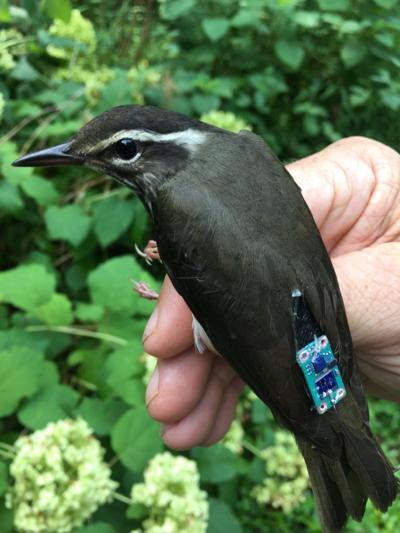Source: The News-Enterprise
August 4, 2019

Bernheim Arboretum and Research Forest is joining a global wildlife tracking program to help Bernheim and the greater bird conservation community continue to protect bird species and their habitats.
Bernheim, a regional leader in wildlife conservation technology, is the first in Kentucky to join the global Motus Wildlife Tracking System. Partnering with Cellular Tracking Technologies (CTT) and the Office of Kentucky Nature Preserves, the new infrastructure provides cutting-edge capabilities for wildlife tracking, environmental education and bird research.
“This project is a continuation of Bernheim’s 90 years of research into bird migration and habitat use,” said Dr. Mark Wourms, Bernheim executive director. “We’ve documented 229 species of birds, including the ongoing tracking of Golden Eagles that reside in Bernheim during winter.”
“We will use the information we gain to further our mission to protect large forest blocks and the habitat these birds depend upon during migration to locations from Canada and South America,” said Bernheim’s Director of Conservation Andrew Berry.
Bernheim already is an internationally renowned destination for birders and designated as an Important Bird Area by the Audubon Society. With the new installation, Bernheim fills an important gap in the existing Motus network in North America.
“If a bird is tagged with a transmitter from anywhere in the world and passes by a Bernheim SensorStation or Node, that information will be transmitted back to the network and the appropriate researcher,” said Berry. “Equally interesting, if one of our Bernheim-tagged birds flies over a Motus station elsewhere on its migration route, that information will be transmitted back to us, ultimately adding to our understanding of bird and other wildlife migration.”
Bernheim also will install a data portal display at the Bernheim Education Center, giving visitors a real-time look at what tagged birds are doing throughout Bernheim. A handheld CTT Locator unit will be available for researchers or school groups to provide real-time tracking of animals in the field, adding a high-tech educational tool that contributes to Bernheim’s research and outreach goals.
“Natural areas and nature preserves are increasingly important for neotropical migrant songbird populations as habitat loss increases throughout their ranges,” Weese said. “We’re very excited to be partners on this cutting-edge project. With this technology, we’ll get very specific information on the arrival and departure of these migratory birds, as well as learn more about their use of habitat during the breeding season.”
Regular updates will be made as the Bernheim team tracks these migrating birds on their journey to various locations.

